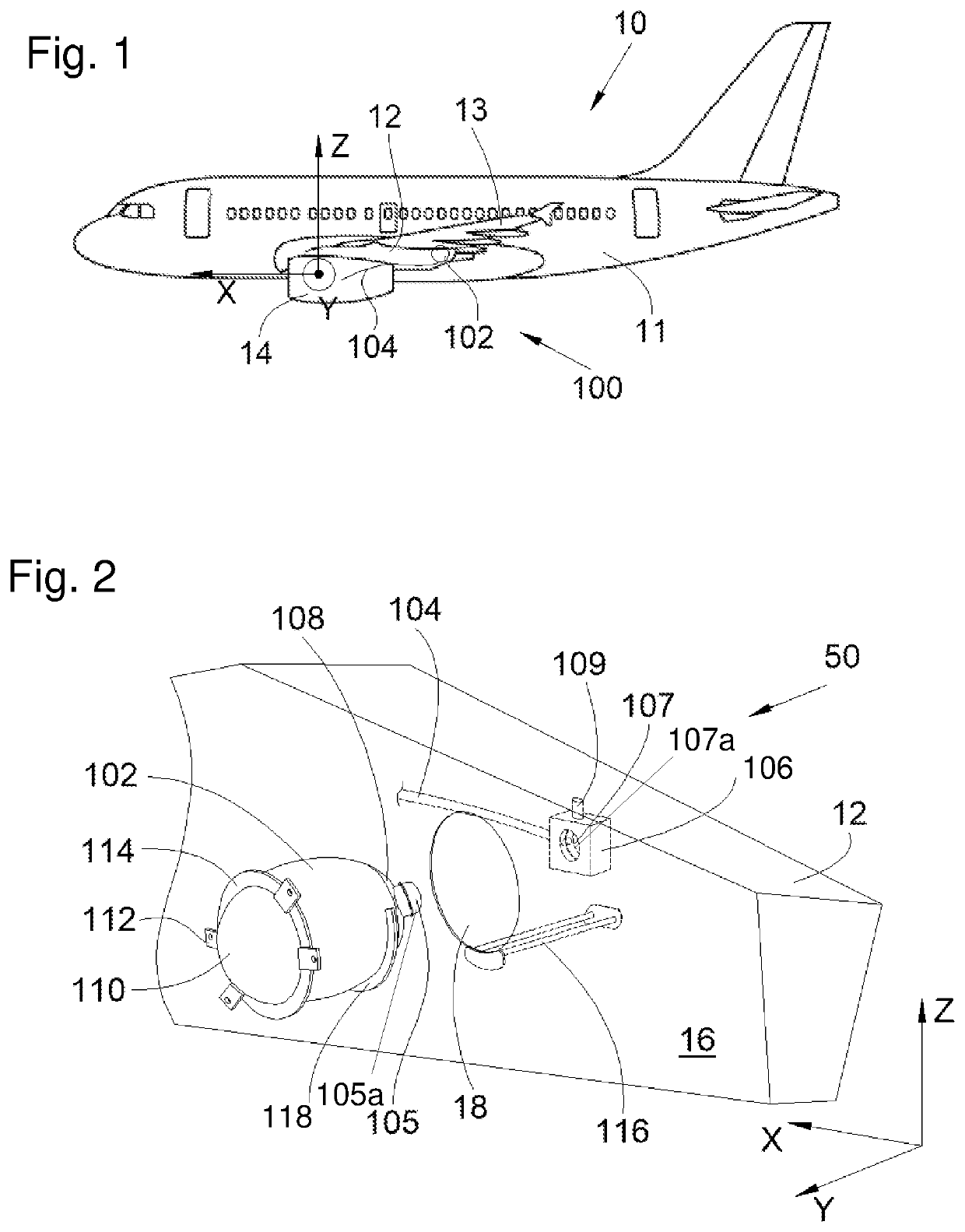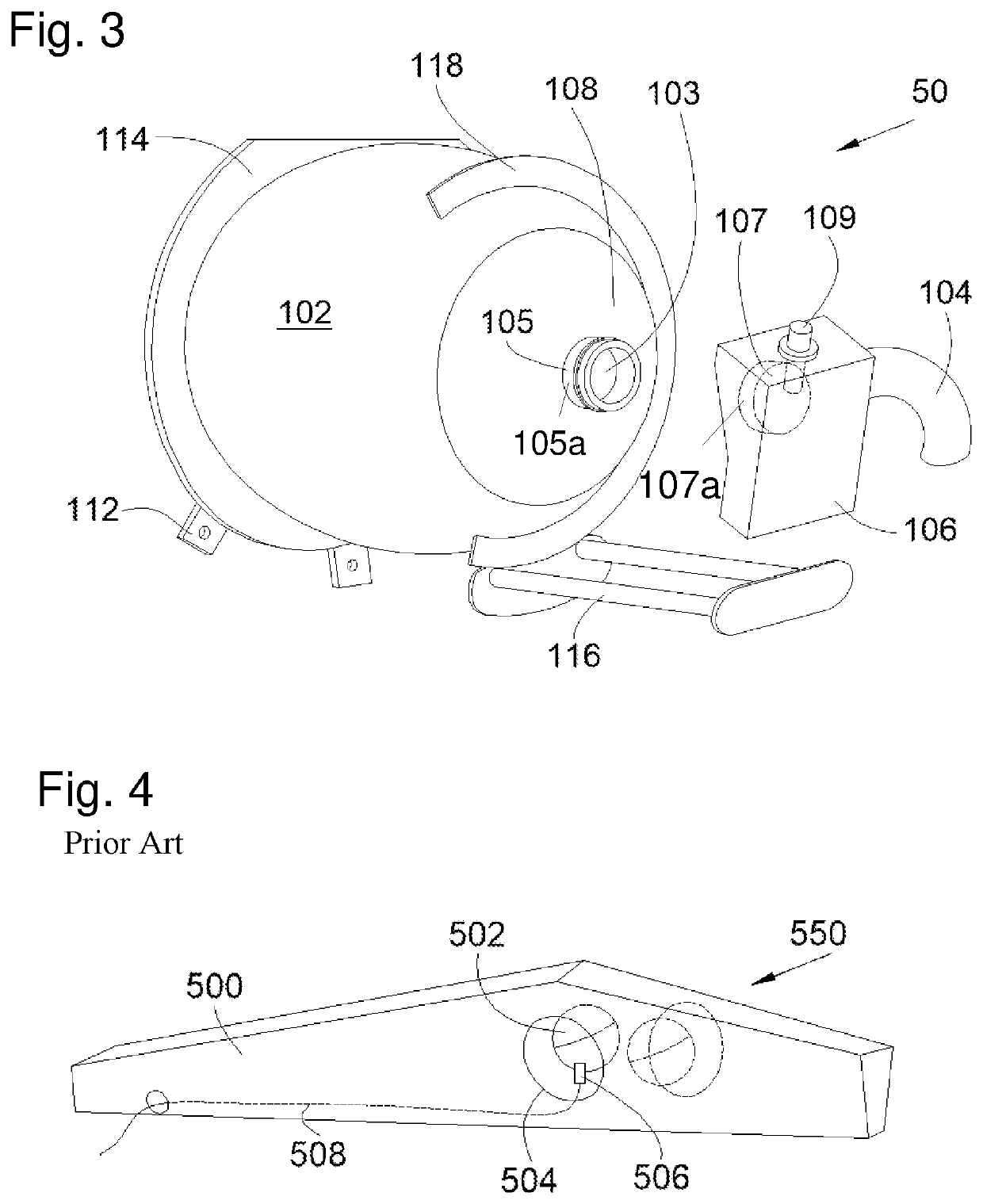Assembly for an aircraft, the assembly including a pylon and a tank containing an extinguisher fluid
- Summary
- Abstract
- Description
- Claims
- Application Information
AI Technical Summary
Benefits of technology
Problems solved by technology
Method used
Image
Examples
Embodiment Construction
[0026]In the following description, terms relating to a position refer to an aircraft in a normal flight position, that is to say, as represented in FIG. 1.
[0027]In the following description, and by convention, the longitudinal direction of the turbojet which is parallel to the longitudinal axis of the aircraft is named X, the transverse direction which is horizontal when the aircraft is on the ground is named Y, and the vertical direction which is vertical when the aircraft is on the ground is named Z, these three directions X, Y and Z being mutually orthogonal.
[0028]FIG. 1 shows an aircraft 10 that includes a fuselage 11, to each side of which is fixed a wing 13 that carries an engine 14 such as, for example, a turbofan engine.
[0029]The aircraft 10 also includes, for each engine 14, a pylon 12 that fixes the engine 14 under the wing 13.
[0030]The aircraft 10 includes, for each engine 14, an anti-fire system 100 that includes at least one tank 102 and a discharge pipe 104 for each t...
PUM
 Login to View More
Login to View More Abstract
Description
Claims
Application Information
 Login to View More
Login to View More - R&D
- Intellectual Property
- Life Sciences
- Materials
- Tech Scout
- Unparalleled Data Quality
- Higher Quality Content
- 60% Fewer Hallucinations
Browse by: Latest US Patents, China's latest patents, Technical Efficacy Thesaurus, Application Domain, Technology Topic, Popular Technical Reports.
© 2025 PatSnap. All rights reserved.Legal|Privacy policy|Modern Slavery Act Transparency Statement|Sitemap|About US| Contact US: help@patsnap.com


